02:55
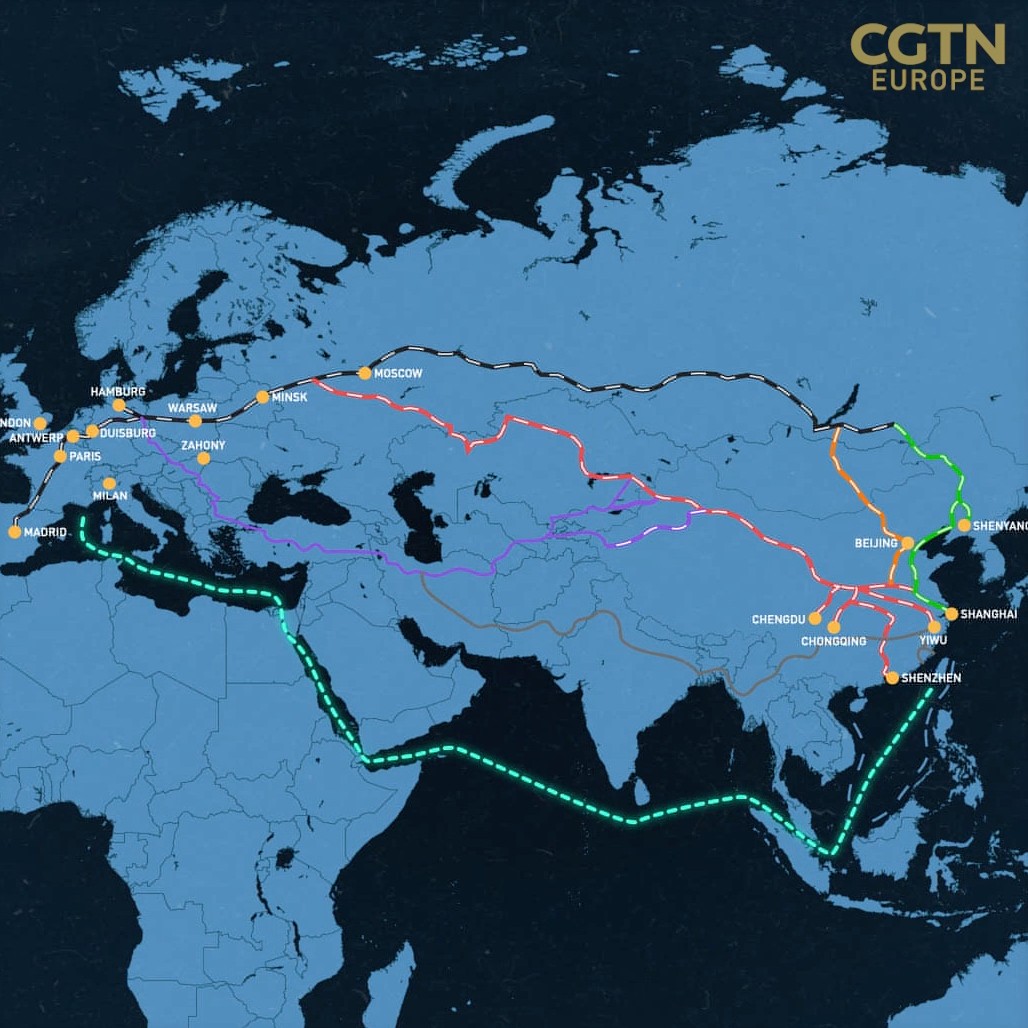
The past century has been a story of expansion and development, from home conveniences to space exploration.
But could the next one be dedicated to a return to the land and realizing the usefulness of existing technology?
The Belt and Road Initiative (BRI) is a new superhighway connecting China to Europe, and Eastern Europe is a crucial gateway for the project.
The rail aspect of the ambitious BRI is faster than cargo ships and cheaper than flying – so let's take a look at some of its vital statistics.
00:19
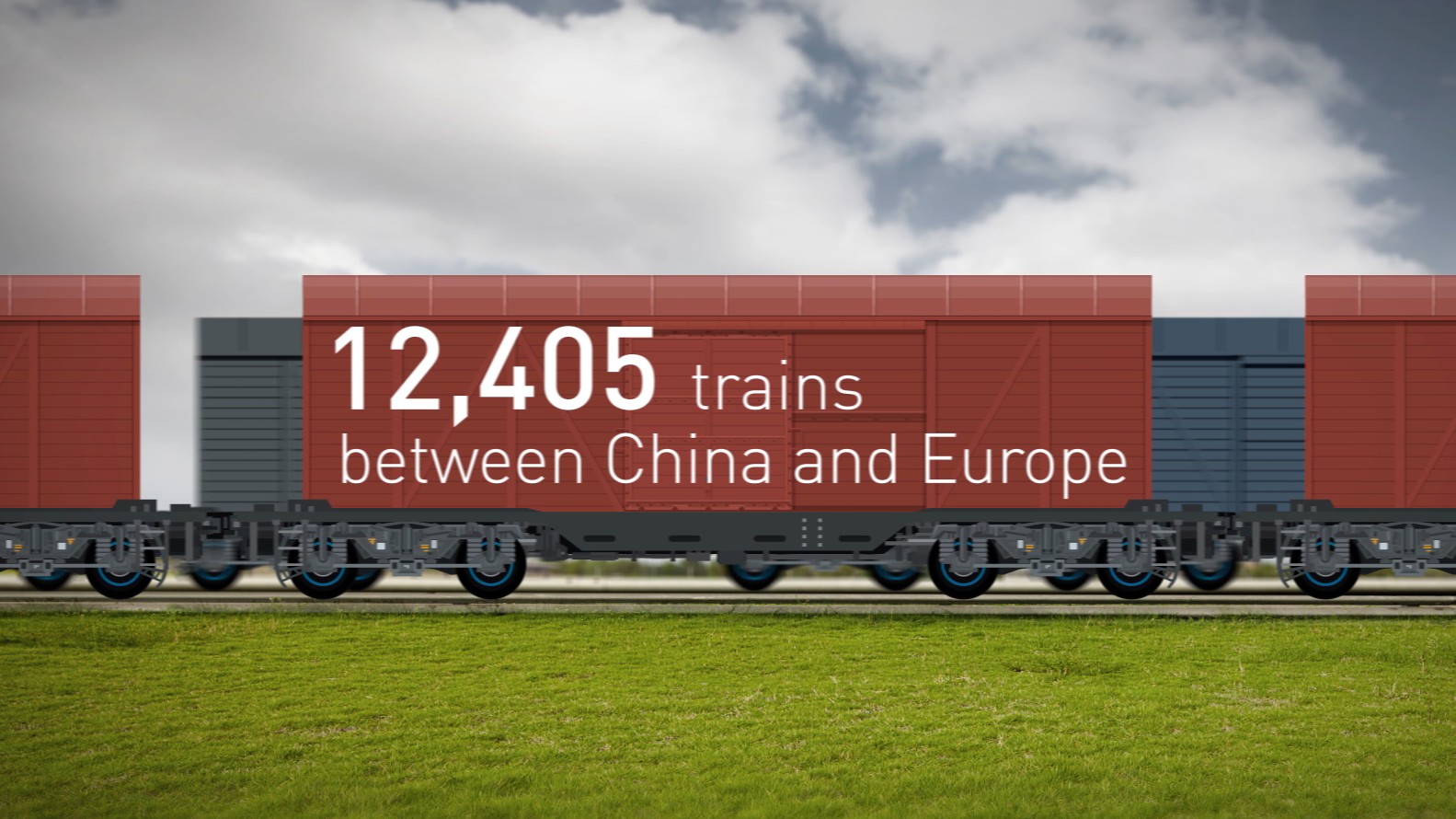
The European Leg
Once the freight line gets to Europe, it connects some of the most important capitals and industrial areas on the continent.
Its first stops are Minsk and Warsaw, before the lines continue west to Berlin (where all three lines meet), on to Hamburg, Duisburg, Antwerp, Paris, Madrid and London.
How long is it?
The full route isn't complete yet, but the rail line stretches more than 10,000km from Chengdu, southwest China to Milan in northern Italy.
Across two continents, the China Railway Container Transport Corp lines will supply 92 cities in 21 countries.
How does it get to Europe?
There is going to be a Northern, Central and Southern route.
The Northern and Central routes both come through Russia and enter Europe through Belarus and Poland.
The third Southern route will come through Turkey before traveling north through the Balkans.
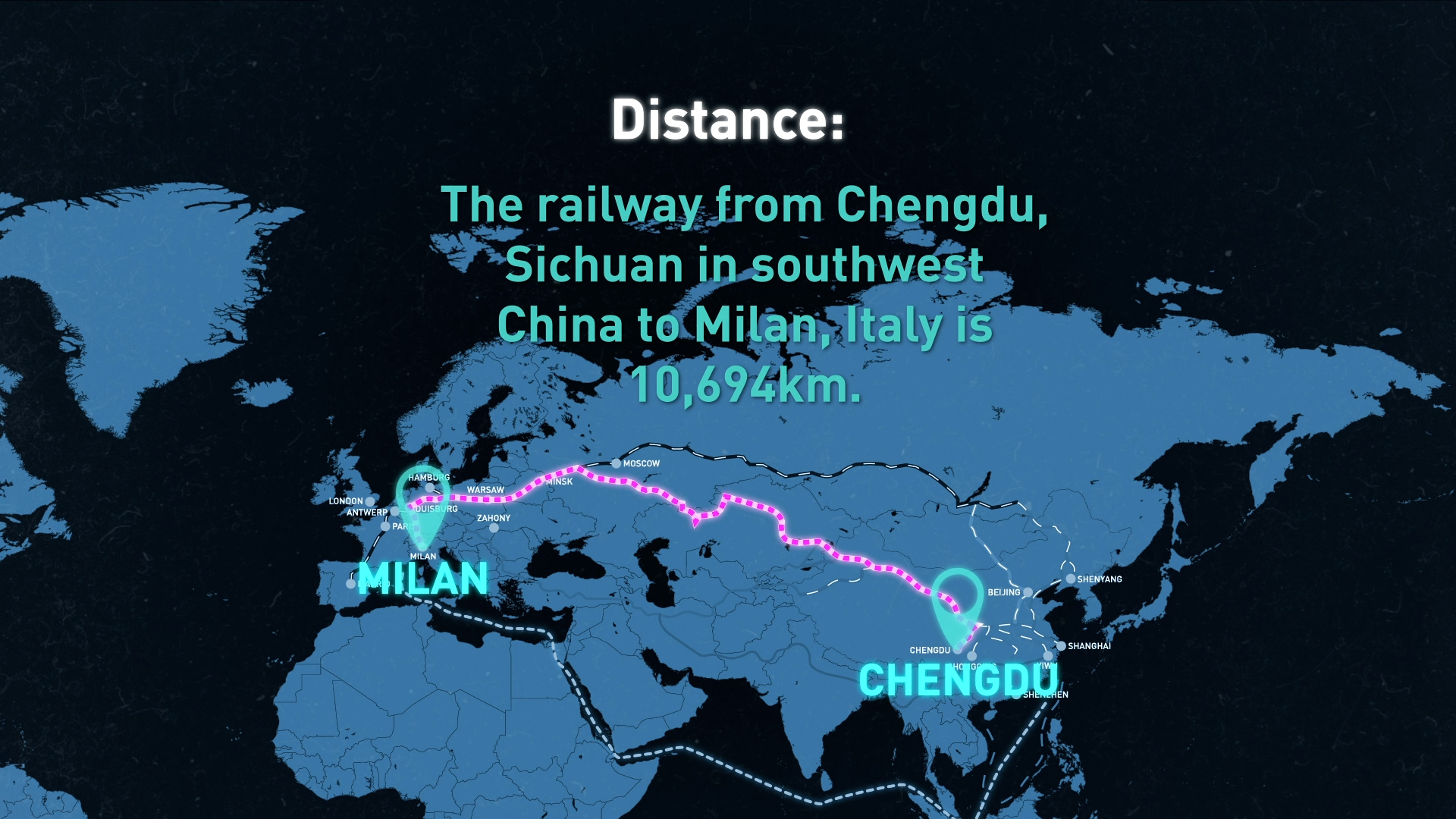
What's the point?
The total trade between China and Europe in 2020 was worth $703 billion.
The worth of goods carried by train was "only" $50 billion, that's 7 percent of the total.
But China wants to see that figure increase.
The pandemic has spurred on rail freight growth because so much air and sea freight was suspended or delayed in 2020.
With the influx of medical equipment being transported by the China-Europe rail link, the amount of goods moved in June 2020 was up 68 percent compared with June 2019.
What goods travel by train?
China to Europe
Electronics – Companies such as Apple use Chinese manufacturers to produce goods including iPhones, which are sold globally.
Appliances – The same goes for many "white goods" like washing machines, and both domestic and industrial machinery such as ovens or dishwashers.
Clothing and shoes
Europe to China
Unlike the goods sold to Europe, the products that come back to Asia are mainly foodstuffs.
Beef is a major import, as are other frozen meats. Beer, wine and to a lesser extent spirits, also make up a large proportion of exports to China. These types of goods pose their own challenges in long-distance trade, as temperature and conditions must be maintained throughout the journey.
Another popular product is milk powder, though it is significantly easier to transport than fresh goods.
Source: Sino-Europe Cargo
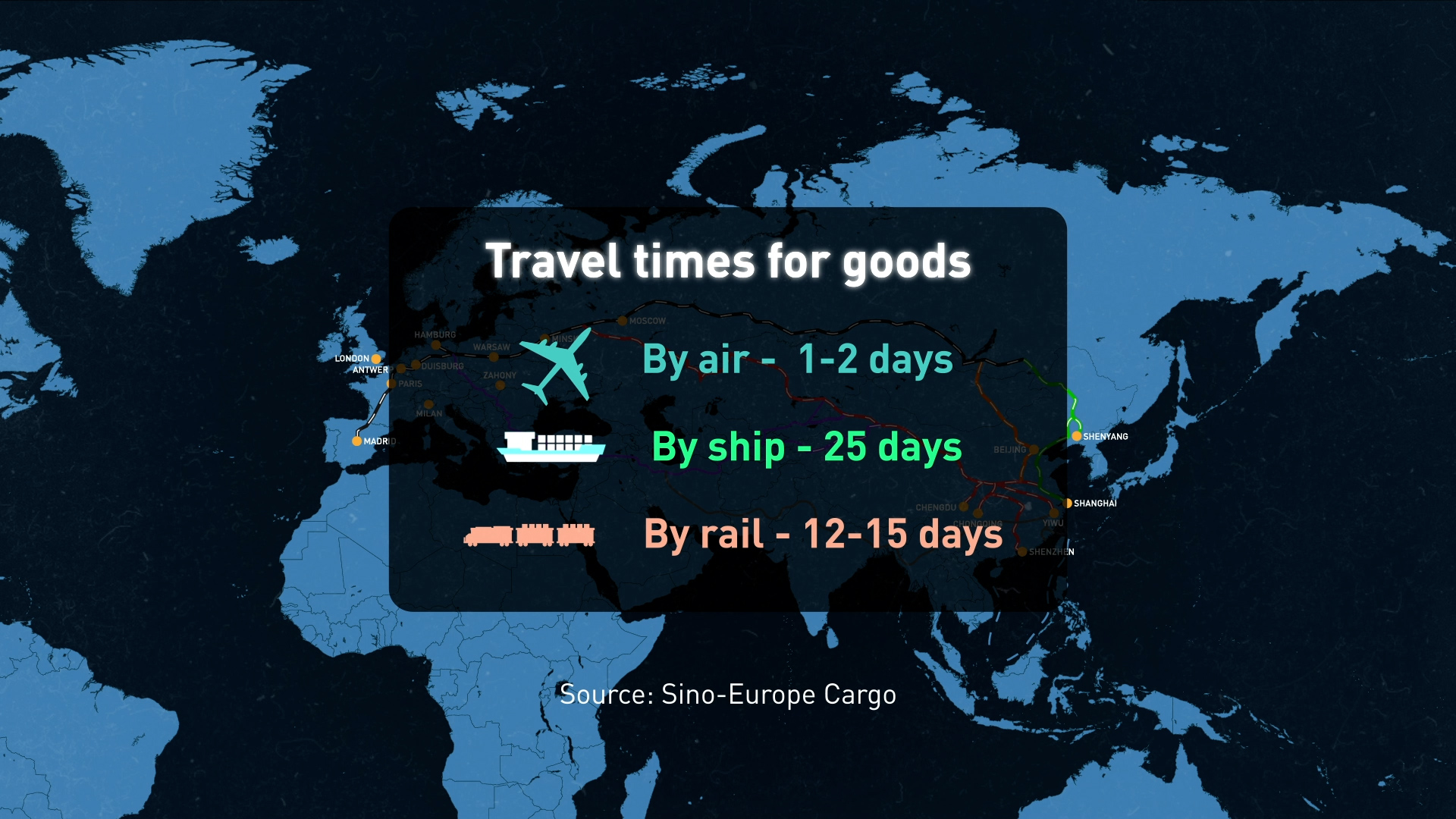
Time, cost and environmental benefit
As we were all reminded this year, the global shipping industry is a delicate one that can be held up at pinch points, such as the Suez Canal for example. A problem in one of these areas can cause serious delays – with the associated costs mounting into the billions of dollars.
By ship, cargo takes approximately 25 days to travel from Asia to Europe or vice versa.
By air, that journey is between one and seven days, depending on the route.
And the rail trip is between 12 and 15 days.
Although it's the quickest, air freight is much worse for the environment, expending 95 percent more carbon dioxide than rail.
Rail is also far cheaper than air freight, although it is slightly more expensive than the slower sea option.
Train cargo costs $60 per 100 kilos, compared with $180 for air freight and $20 for shipped cargo.
Source for all the above figures is Sino-Europe Cargo.
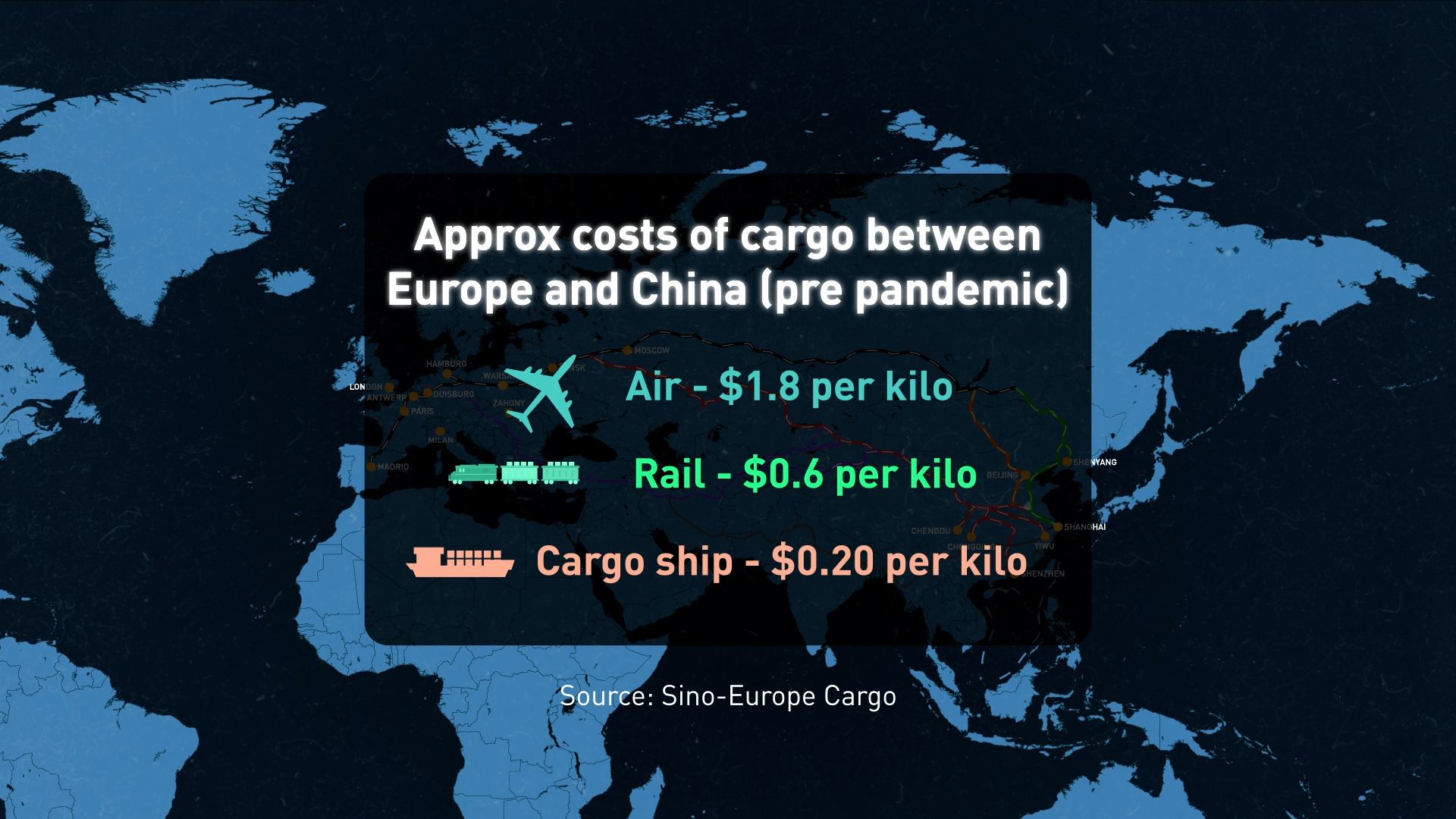
What challenges remain?
Infrastructure – The existing route struggled to cope with the pandemic-driven increase in traffic.
Establishing frictionless trade – Traveling through many borders slows down trade.
China-Europe trade deficit – Many trains are full on the way to Europe but empty on their return, which hampers affordability.
The last kilometer – Connections from stations to consumers slows down trade.
Animator: James Sandifer.

